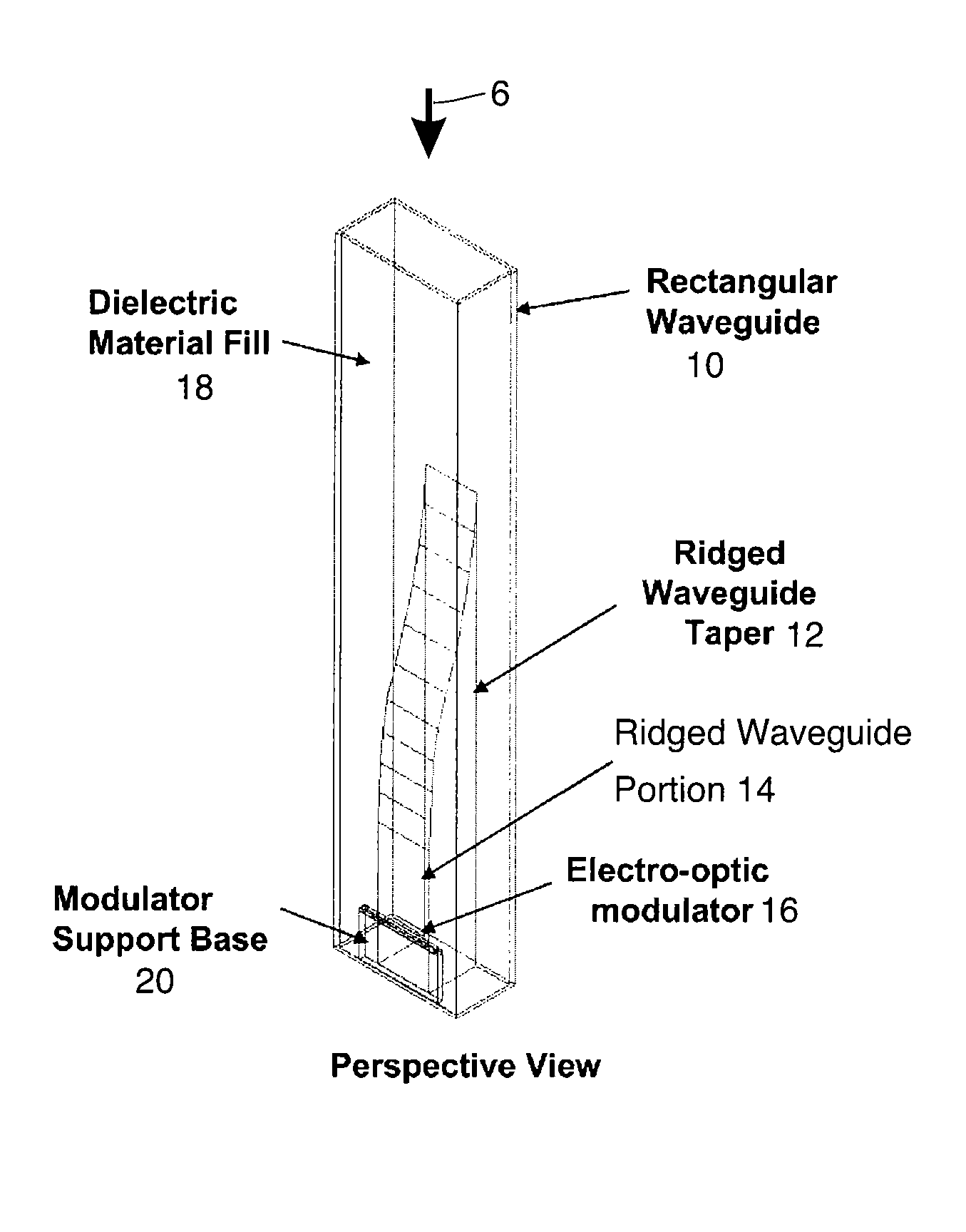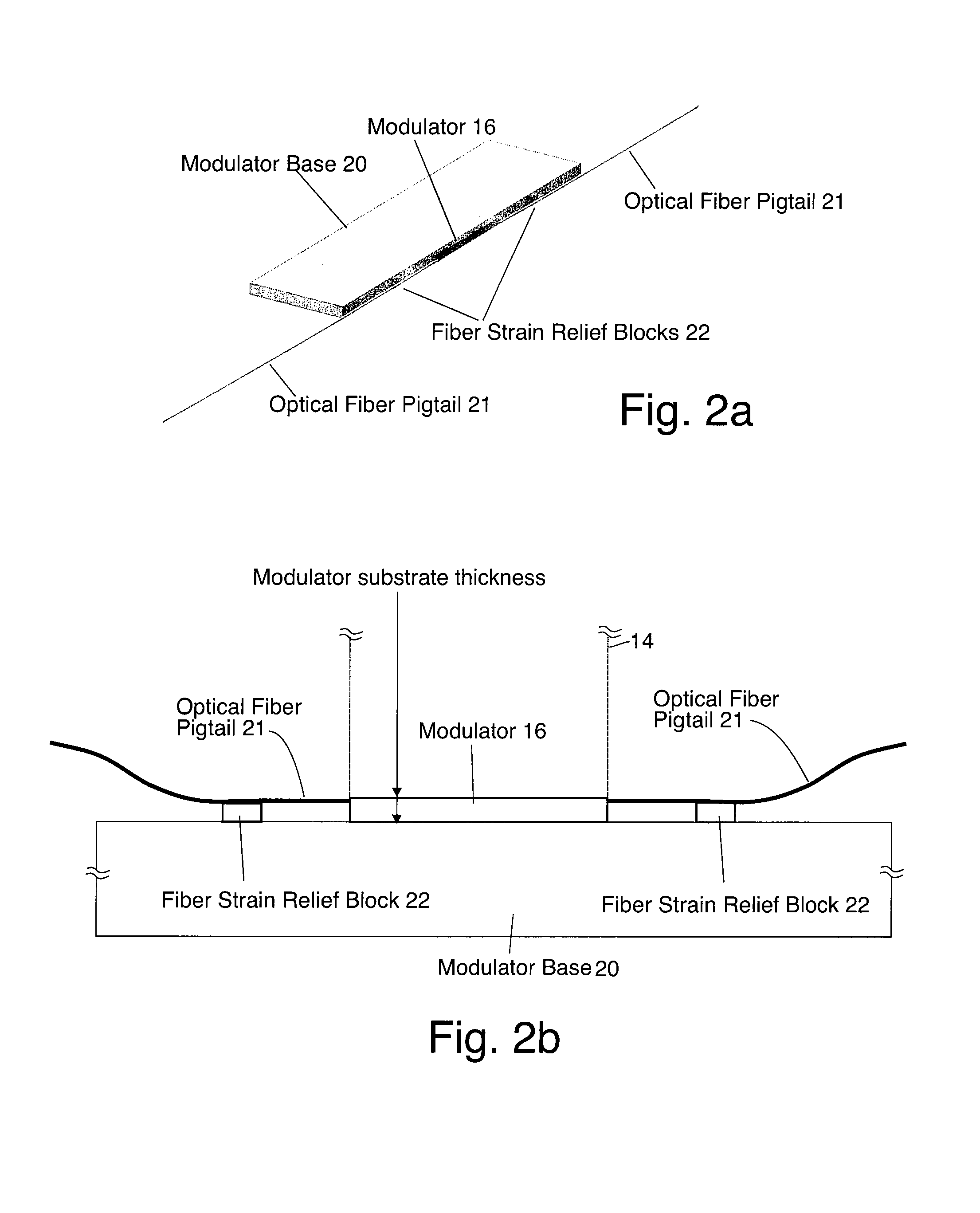Waveguide assembly for a microwave receiver with electro-optic modulator
a microwave receiver and microwave receiver technology, applied in waveguides, waveguide horns, waveguide type devices, etc., can solve the problems of antenna and modulator damage, approach to bandwidth, etc., to prevent electric field breakdown in the waveguide assembly, reduce the effect of incoming electric field concentration, and high dielectric strength
- Summary
- Abstract
- Description
- Claims
- Application Information
AI Technical Summary
Benefits of technology
Problems solved by technology
Method used
Image
Examples
Embodiment Construction
[0031]A basic embodiment of a rectangular waveguide to ridged waveguide assembly is shown in FIGS. 1a-1c. In this embodiment an incident RF signal 6 arrives at a modulator 16 via the rectangular waveguide 10. The waveguide dimensions are selected such that only the TE10 mode propagates. Preferably, the dimensions of the rectangular waveguide 10 are compatible with standard dimension waveguides, such as those designated by the EIA (Electronic Industry Alliance). The TE10 mode is transformed to a single ridged waveguide mode through a ridged waveguide taper 12. The shape of the ridged waveguide taper 12 along the waveguide 10 is determined by the required impedance transformation between the rectangular waveguide 10 and the ridged waveguide 14. Although the impedance of a rectangular waveguide 10 is arbitrary, there is a convention that fixes the impedance based upon the power that flows across the waveguide cross section, and the positive current that flows across the cross-section Z...
PUM
 Login to View More
Login to View More Abstract
Description
Claims
Application Information
 Login to View More
Login to View More - R&D
- Intellectual Property
- Life Sciences
- Materials
- Tech Scout
- Unparalleled Data Quality
- Higher Quality Content
- 60% Fewer Hallucinations
Browse by: Latest US Patents, China's latest patents, Technical Efficacy Thesaurus, Application Domain, Technology Topic, Popular Technical Reports.
© 2025 PatSnap. All rights reserved.Legal|Privacy policy|Modern Slavery Act Transparency Statement|Sitemap|About US| Contact US: help@patsnap.com



